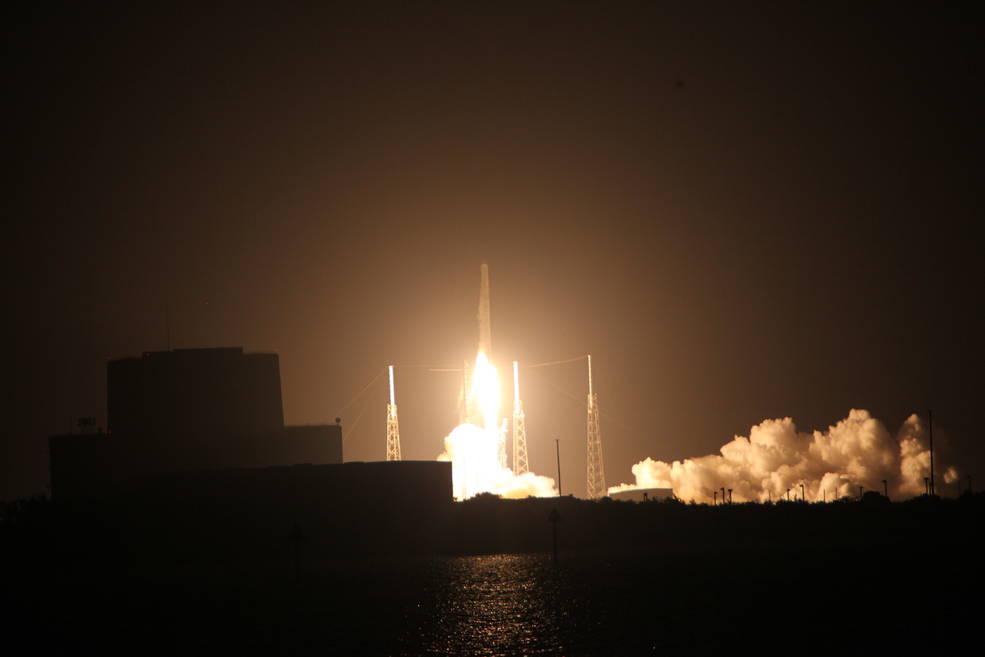
Elon Musk‘s latest bold plan for his SpaceX company is nothing short of total world coverage for satellite-based telecommunications.
His Space Explorations Holdings LLC, parent company of the SpaceX rocket company, filed an application with the Federal Communications Commission last week for licensing of 4,425 satellites he wishes to put into orbit to provide global coverage for high-speed internet service and other telecommunications capabilities.
The application makes official and offers details for the broad plan Musk announced early last year, jokingly calling it “Sky-Net” after the notorious corporate villain in the “Terminator” movie franchise. In a speech, Musk talked about putting together a large satellite network to provide worldwide telecommunications while also providing a platform for communications for his proposed Mars mission plans.
The application, filed Nov. 15, calls for an initial constellation of 1,600 satellites that would provide high-speed internet access, plus other types of high-speed data, video and telephone services for the continental United States, Hawaii, Puerto Rico, the U.S. Virgin Islands, and other areas. Eventually Space Explorations Holdings proposes putting a total of 4,425 telecommunication satellites into 83 different orbital planes to give virtually complete global coverage.
That would be more than double the number of currently active satellites in orbit around the Earth, Musk stated in his speech last year.
Other companies are seeking to do much the same thing, perhaps on smaller scales. For example, earlier this year OneWeb and Airbus Defense and Space announced their plans for 900 telecommunication satellites.
There are no details in the Space Exploration Holdings FCC application regarding when the satellites would be deployed, how they would be launched into space, or where they would be launched from. However, it appears Musk’s company intends to control them, for they are referred to as the “SpaceX System” in the documents.
In his Jan. 16, 2015, speech he talked about the company having “its own satellites” and “rebuilding the internet in space.” And he said his goal was to “have the majority of long-distance internet traffic go over this network, and about 10 percent of local consumer and business intent traffic.”
That would provide Musk’s company with a huge new market in space — not just launching hardware into space for customers, but launching its own hardware for a run at owning a big piece of the worldwide telecommunications business.
The satellites would be deployed to altitudes of 1,150 and 1,325 kilometers [approximately 715 to 825 miles,] a region of lower-Earth orbit that is relatively vacant of satellites right now.
“Once fully deployed, the SpaceX System will pass over virtually all parts of the Earth’s surface and therefore, in principle, have the ability to provide ubiquitous global service,” an appendix to the application states. “Because of the combination of orbital planes used in the SpaceX System, including the use of near-polar orbits, every point on the Earth’s surface will see, at all times, a SpaceX satellite at an elevation no less than 40 degrees, with increasing minimum elevation angles at lower latitude.”
The most obvious place for most of the launches to take place is Cape Canaveral, where SpaceX controls launch sites at both Kennedy Space Center and Cape Canaveral Air Force Station. However, the FCC documents make clear many of the satellites would be put into polar orbits, which would mean those would most likely be launched from SpaceX’s launch complex at Vandenberg Air Force Base in California. SpaceX also is developing its own, privately owned launch complex in south Texas, though that is not on line yet.



